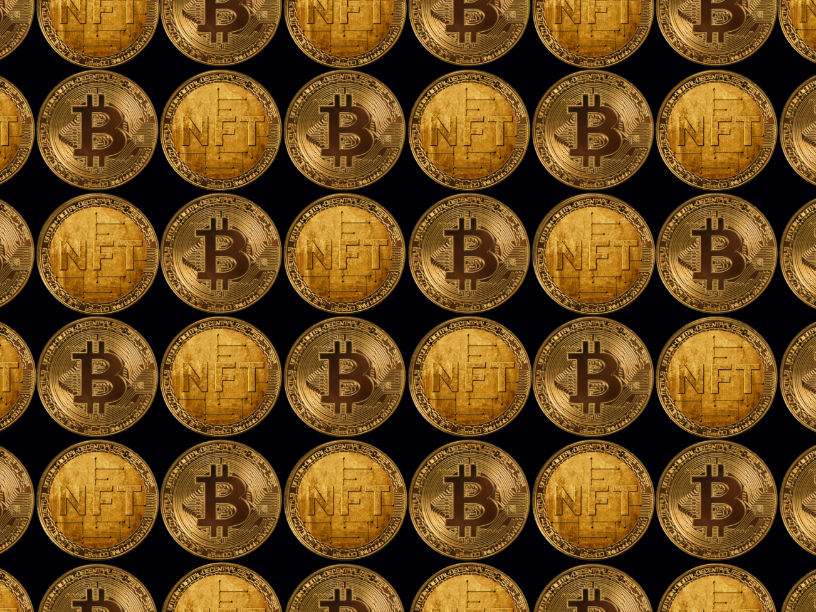
Think Tank
Enter the NFT: Another Bubble, or a Producer of Real Business Value?

Does the digital asset known as a non-fungible token (NFT) represent another promising aspect of the cryptocurrency and blockchain gold rush? Or will purchasers end up owning piles of digital dirt?
For the moment, NFTs look like a glittering path to instant riches, although what’s actually being sold and bought isn’t entirely clear. In the most famous recent example of digital excess, the artist Beeple saw one of his creations auctioned by Christie’s for a stunning $69 million. Christie’s called it “the first purely digital work ever offered by a major auction house.”
Why would a buyer pay that much money for a work that can be exactly reproduced and enjoyed by anyone for nothing? The winning bidder got a file stored on the blockchain that gave it nominal “ownership” of the artwork. But that word doesn’t signify any kind of exclusive access. Many NFT sales don’t even include copyright or reproduction rights. “Ownership” in this case simply provides the buyer with what’s been described as “bragging rights” that theoretically can be transferred to another buyer down the line. In other words, the buyer has acquired exclusive rights to a few lines of computer code, not a tangible physical asset.
Early versions of NFTs can be traced back to 2012, with the creation of “colored coins,” small denominations of Bitcoin that represented ownership of any number of assets, including property and shares in a company. Five years later came CryptoKitties, an online game that allowed players to adopt and trade virtual cats on a blockchain. Soon after that, the demand for non-fungible (meaning unique and irreplaceable) tokens exploded, to cover any imaginable creation — even a New York Times column that “sold” for $560,000. (With the Times, of course, retaining the copyright.)
The stampede for NFTs puts one in mind of “tulip mania” in the Netherlands in 1637, when the price of tulips briefly soared to absurd levels, only to crash and leave gullible buyers penniless. NFTs could well prove to be just the latest in an apparently endless stream of economic bubbles that are fated to burst. (A more serious and widespread recent example was the blowup of the housing market, triggering the Great Recession of 2007-2008.)
Nevertheless, NFTs have their proponents, who claim that the instrument is real and here to stay. According to Jude C. Lee, founder and chief executive officer of web app developer Illnigence LLC, NFTs recorded on the blockchain can potentially represent ownership in much more than pieces of digital art, including real estate and company equity. NFTs amount to “digitizing tangible assets in digital format,” he says. “I would get behind it, meaning keep up with it.”
Hardly a ringing endorsement of a concept that’s still young and unknown to most people. But Lee, who also serves as a consultant to Digital.com, believes that NFTs have “tremendous potential.” Along with blockchain, he says, the asset “solves a lot of problems” by creating a decentralized mechanism for engaging in numerous business transactions, bypassing traditional banks.
By itself, blockchain is increasingly being viewed as a powerful tool for recording data in an immutable ledger, distributed among multiple computers. So where do NFTs come in, beyond the precarious world of crypto art? Lee says they can serve as tokenized representations of real business assets. For example, a company selling luxury real estate might use NFTs to verify fractional ownership in property. Stored on the Ethereum blockchain, the relevant NFT replaces the need for a paper document.
Lee also defends the use of NFTs for the acquisition of creative work. While others might reproduce digital art for free, “you are the original owner of the artwork. You have in it your [digital] wallet.”
He acknowledges that purchase of an NFT doesn’t necessarily come with a copyright — at least for now. Currently there are no regulations that protect ownership of the work through such a transaction. In future, however, NFT owners might be granted the power to assess licensing fees against anyone seeking to reproduce or make use of the work in question. Lee likens the current state of affairs to when music first went to the cloud, becoming widely available to listeners without compensating performer or publisher. (Musicians and composers might argue that things aren’t that different today, given the minuscule amount of royalties they receive from streaming services such as Spotify.)
Questions remain about the ability of NFTs to sustain the huge purchase prices that have garnered so much public attention. Indeed, for NFTs to take hold, they’ll need to be embraced for transactions that generate real value to businesses and the supply chain.
For now, Lee remains a cheerleader of the NFT. “We’re going to see a lot more innovations around it,” he says. “People are going to come up with ideas to solve a lot of problems. I have really high hopes for it.”
Next: How energy intensity clouds blockchain’s future.






